2022 | SYNLABDigitalStrategicE-commerceUser InterfaceWebsiteService DesignUser Research
SYNLAB – creating customer-centric digital channels
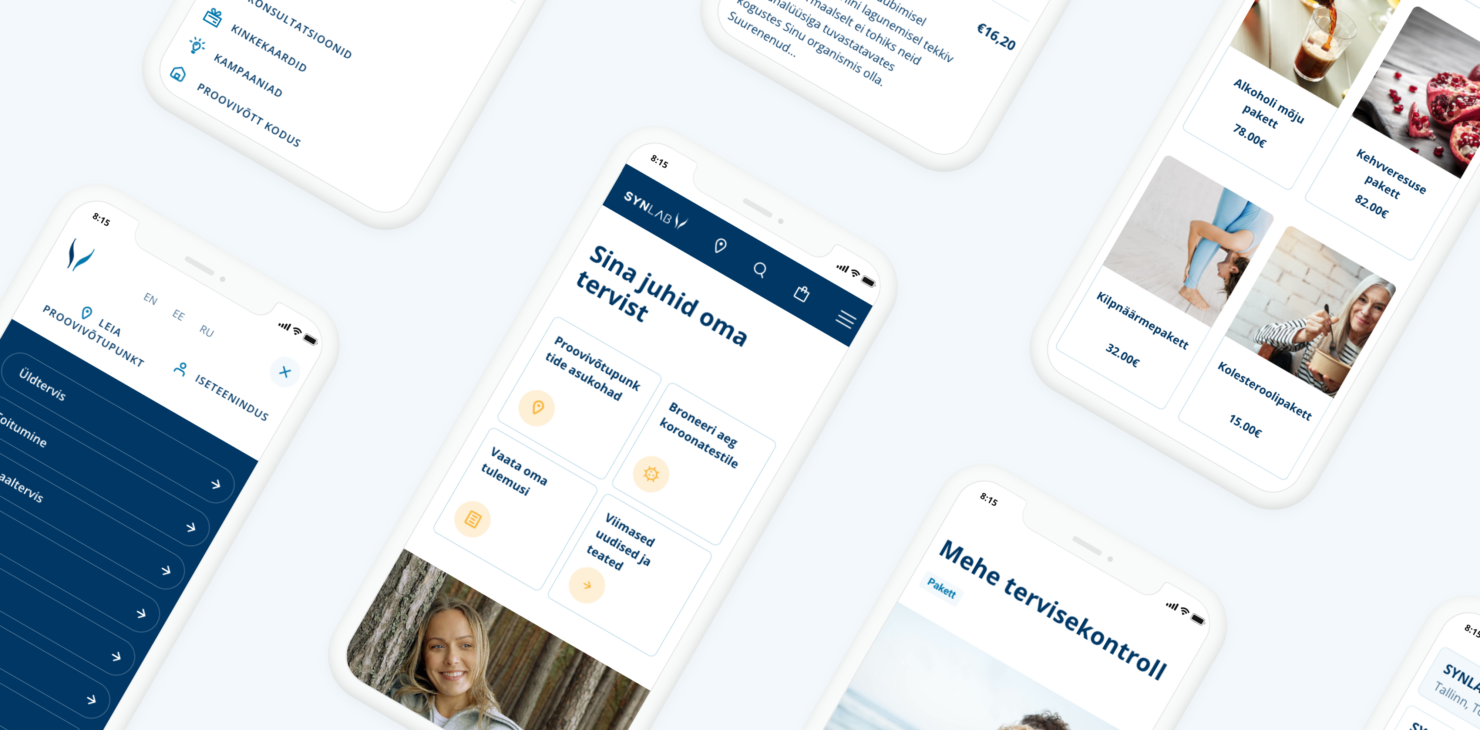
Creating customer-centred digital channels for a leading laboratory service in Estonia
SYNLAB approached our team with the need to upgrade their customer facing website solutions in Estonia, one of the group’s operating markets. During the first stages of the global pandemic, our client evolved to create Covid-specific digital solutions which were deeply integrated with the State’s testing and medical systems. The new platform ushered a completely different digital visual style and UX standards that left the older platforms in need of an upgrade. The platforms available to clients included an e-commerce with more than 500 products (tests, panels, and medical services), an informational website and other platforms focused on test results.
The main goal was focused on making more efficient workflows for all stakeholders in the Estonian market, by combining them into one web platform and developing their dashboards, digital solutions and interfaces.
They also aimed to create a centralised user management system to provide control and access for all user accounts. At the same time, the development of the newer platforms continued. It was clear that the project needed to cover the creation of a more subtle, unified digital solution for users.

Our approach was to bring a service design perspective
Understanding that the digital platforms were not only a medium for information, but an important channel for the delivery of services, most of which happened in the physical world. Even though the main focus was to detect the key steps in the user journey that took place on the digital channels, our service design approach benefitted the project as we looked at both the physical and digital realm to understand how to make better flows and interactions between them. More importantly, a human-centered perspective proved to be one of the most valuable assets for this project, as we focused on understanding customers’ experiences, needs and expectations of the client to improve and upgrade the channels.
For deeper insights into the connection between the physical and digital touchpoints, we experienced the services first-hand through service safaris.

Semi-structured interviews to better understand the main user groups
We moved on to better understand the main user groups detected: people with family doctor referrals, interested in a specific topic or with a discrete health concern, and regular users, mostly people with chronic health issues. We conducted 10 semi-structured interviews in 3 different languages with individuals who had experienced the service recently to find possible opportunity areas, pain points, unaddressed needs and expectations.
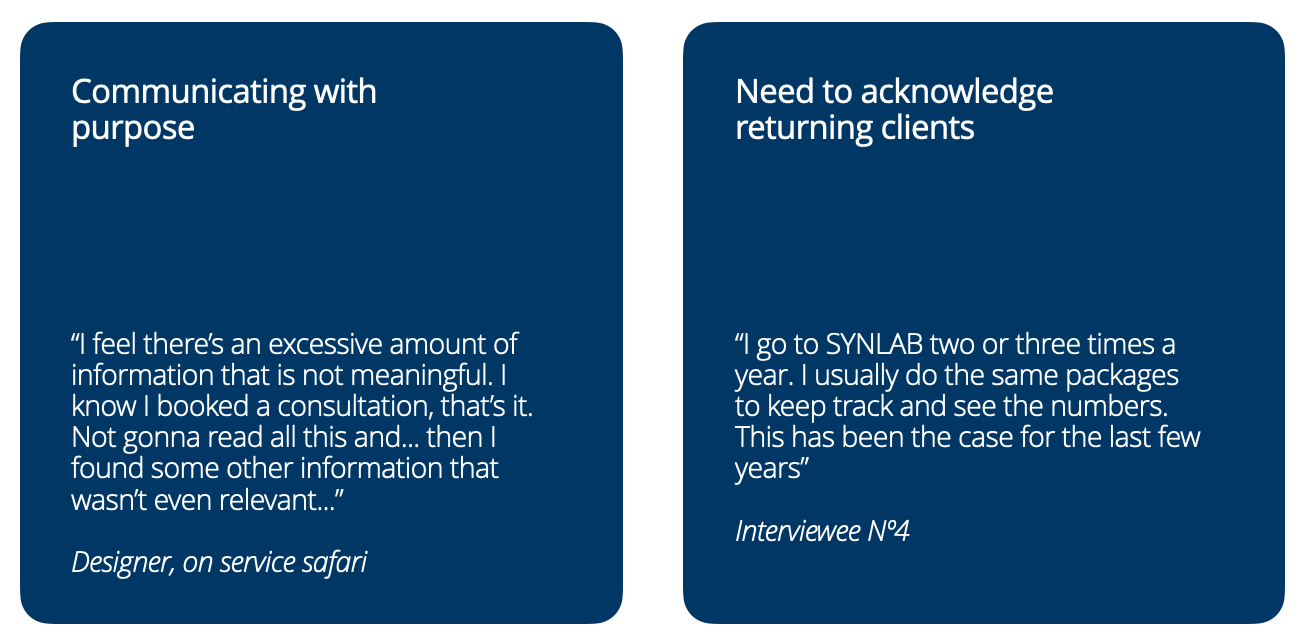
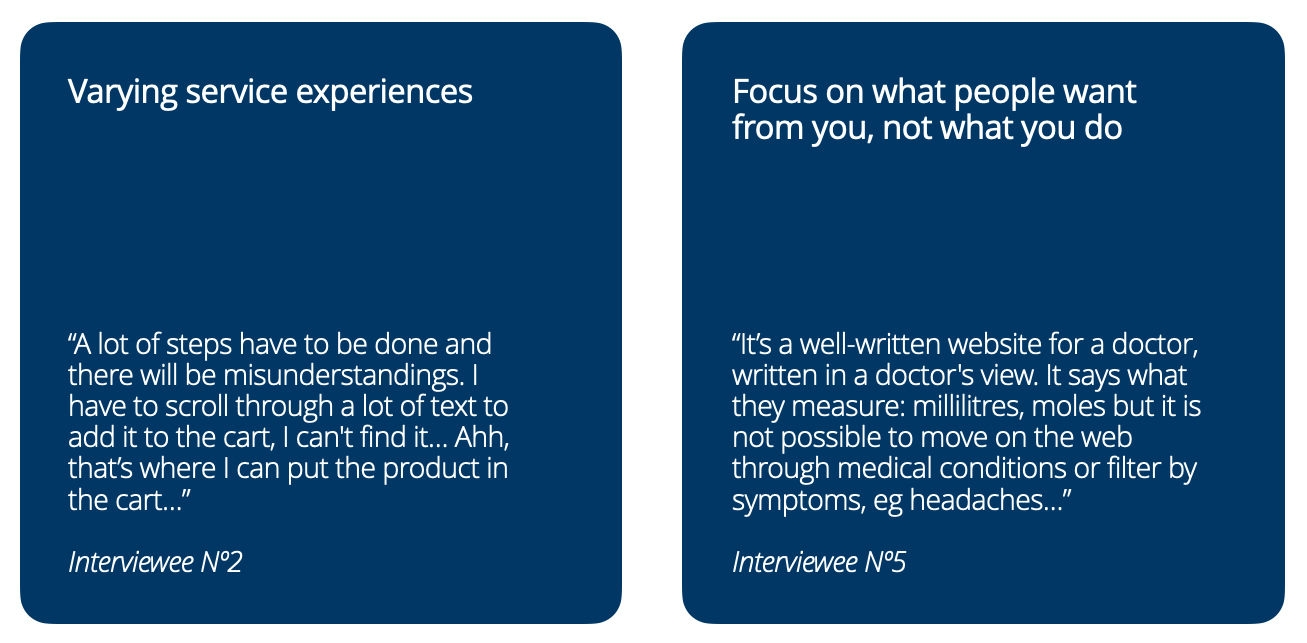
We uncovered several core findings during the research that allowed us to identify opportunities for improvement of the journey and the digital platforms:
- The importance of focusing on what users want from the business, not on what the business does.
- The drastically varying experience between the digital and physical mediums, with the digital channel being too complicated and overwhelming.
- The value and impact of communicating with purpose and on a timely manner.
- The need to acknowledge returning clients and ease their journeys.
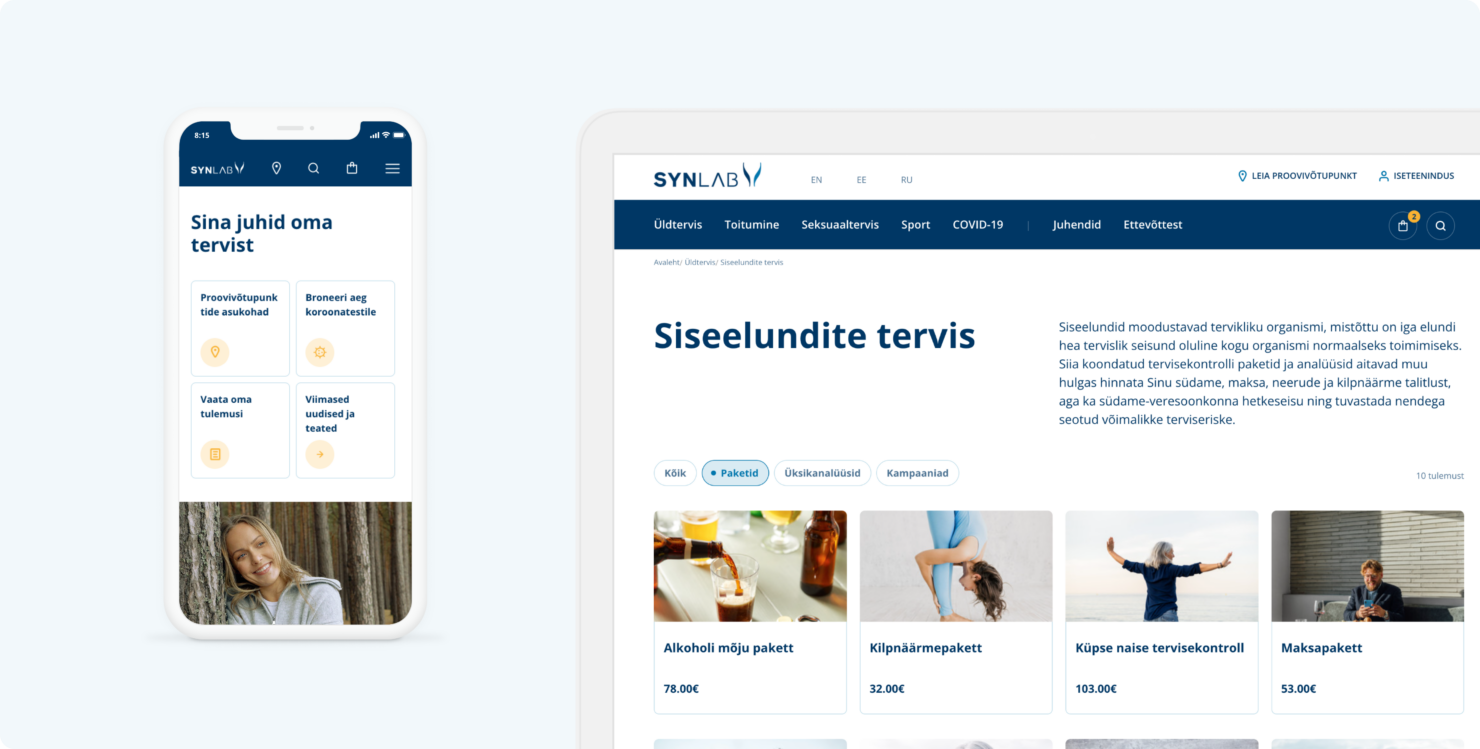
After the research, we worked closely with our team’s digital designers and the client’s developers to create the design strategy and the concept for the platform with its features.
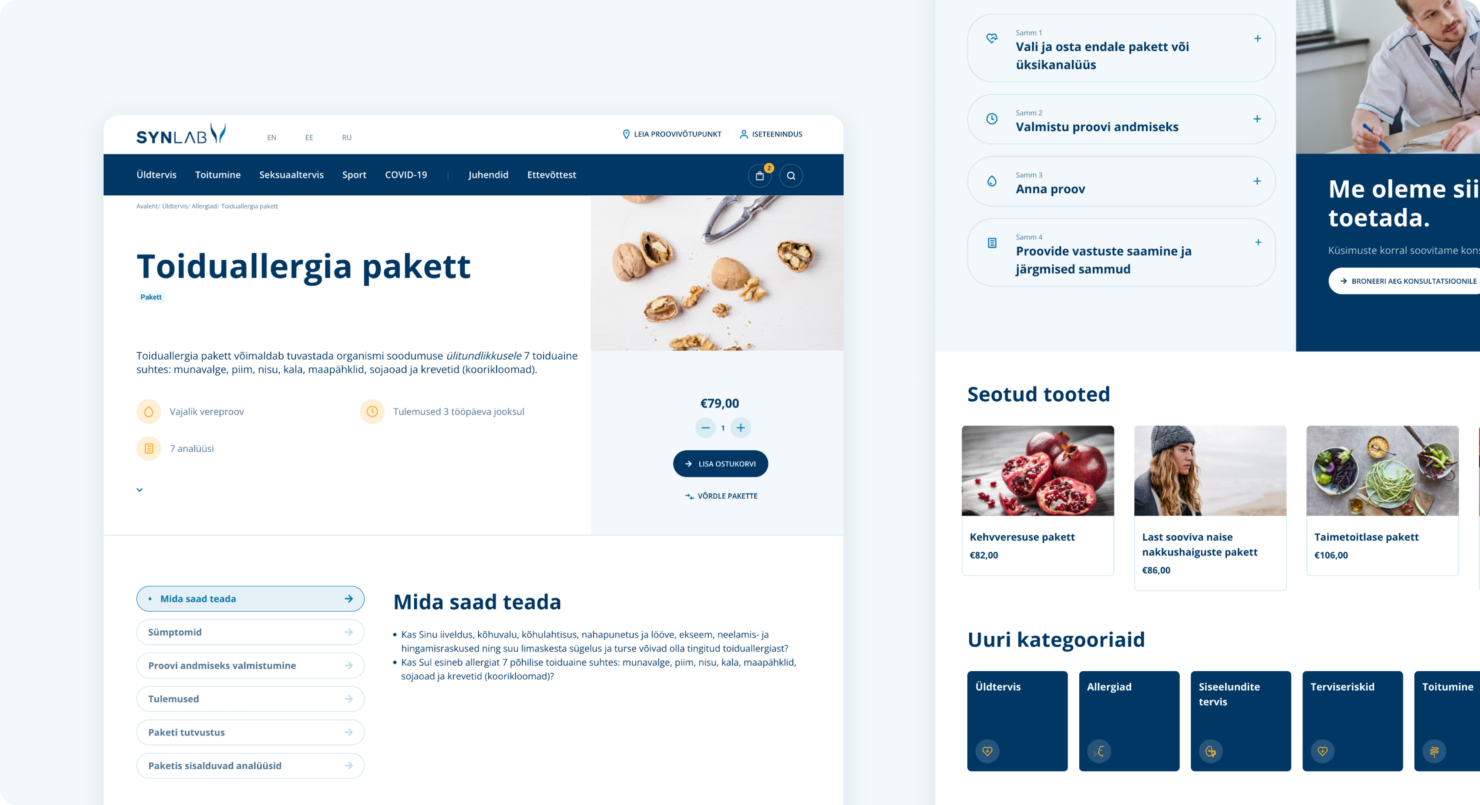
We were looking to create a smooth channel, that mirrored the simplicity and efficiency of the service.
Our goal was to allow clients to inform themselves and complete their purchases without any glitches, hiccups or interruptions. We focused on designing the main flows and features for the platform, through the creation of future user journeys (TO-BE), then zoom-ins into user flows. The research showed the importance of finding and choosing relevant, useful and valuable tests/panels for customers, which would consider their medical conditions, lifestyles and preferences.
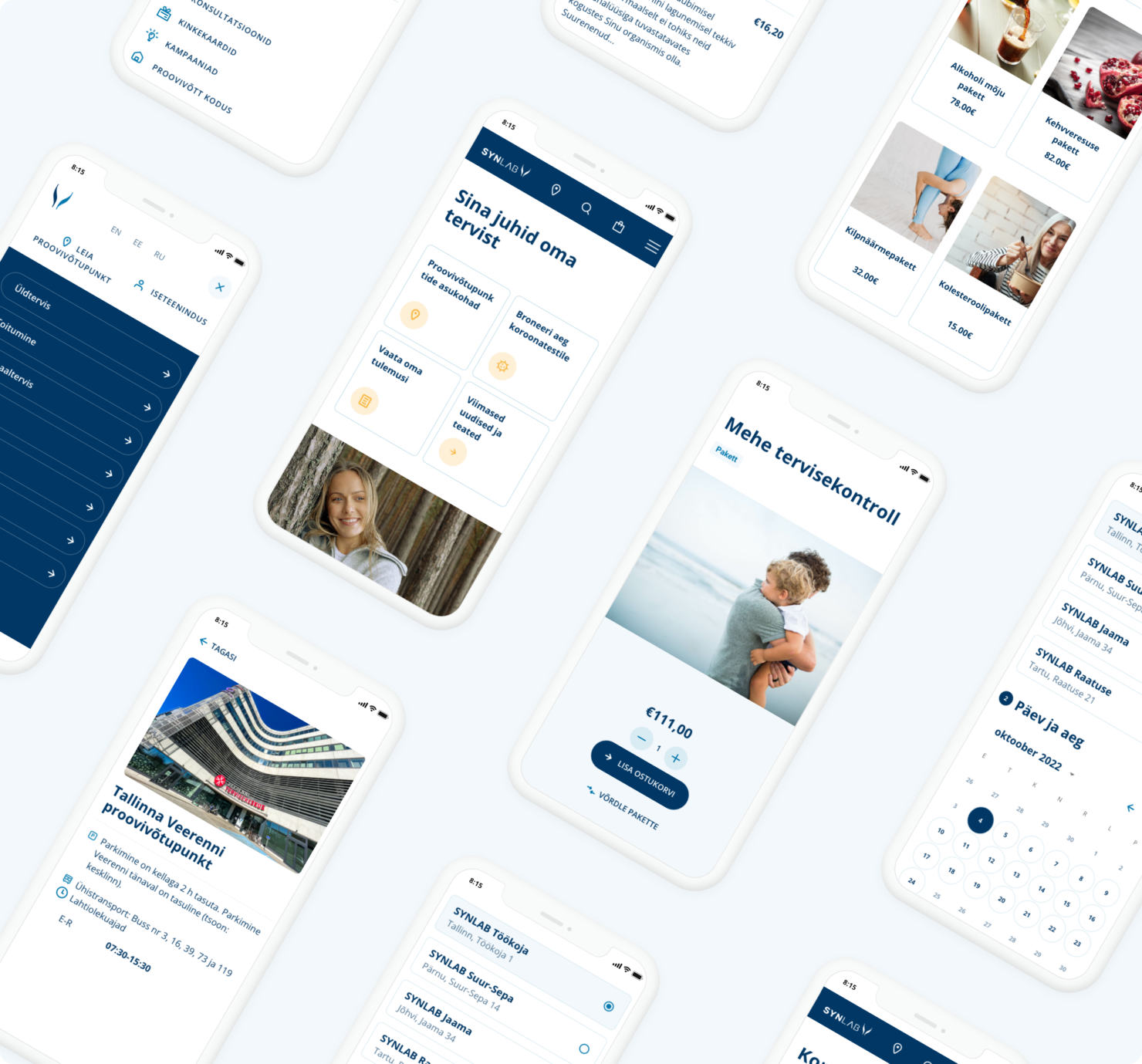
New self service environment, where users can have a clear overview and understanding of their results.
User insights were the backbone behind the making of the digital prototypes, we designed the MVP and the UX / UI of the self service environment, refining the functionalities into clear and easily understandable flows.
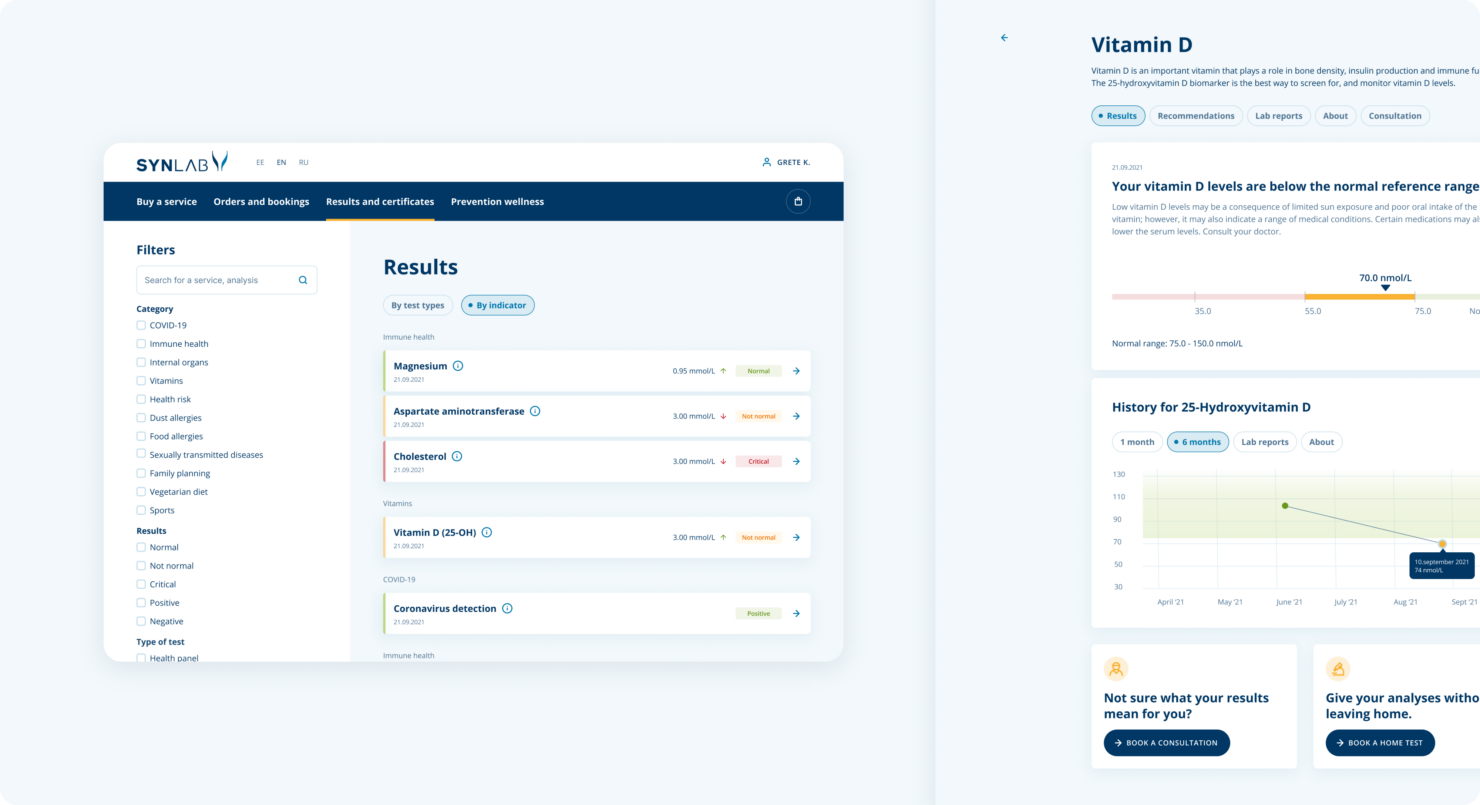
Client comments
“SYNLAB had a vision not just to make new prototype designs but to work out whole new service concepts. We are pleased that this project has allowed us to analyse the entire service and make process changes in every domain to provide a wow-service for our private customers and increase our NPS and customer satisfaction scores.
The impact of this project has been enormous for SYNLAB Estonia and SYNLAB Group, for this concept has been voted as a blueprint for other countries’ enrolments.”
Grete Kikas, Development Manager
(Customer Service Department at SYNLAB Estonia)
UI design guidelines to unify SYNLAB Group online platforms
The systemised guidelines give designers and developers the frameworks they need to create new SYNLAB web apps from scratch or adding features to an existing one.

> Visit website
Team
- Meril Rosenthal – Project lead
- Sofía Vega Anza – Service design lead
- Carolina Maia Groisman – Service designer
- Aivi Kullama – Service designer
- Kreet Käärma – UX / UI design lead
- Grete Hints – UX / UI designer
Partners
- Sonrisa – Developer
Awards
- ADC*Estonia – Service design: The best service design project in the private sector (Shortlisted)
- Kuldmuna – Digital service/app (Gold)
- Kuldmuna – UX/UI journey (Silver)